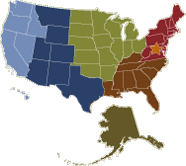DISCOVER PARKS
- Home
- Discover Parks
- magazine
- Rina Swentzell
Rina Swentzell
A Native American artist and scholar helps envision our national lands—through the eyes of native peoples.
 Rina Swentzell
Clay can become many things in the hands of Rina Swentzell, Ph.D. It can become intricate pottery. It can build an adobe home, such as the one she lives in today or the one she grew up knowing in the Santa Clara Pueblo. And it can also be a gritty reminder of the land, a way to hold the places of her ancestors between her fingers.
Rina Swentzell
Clay can become many things in the hands of Rina Swentzell, Ph.D. It can become intricate pottery. It can build an adobe home, such as the one she lives in today or the one she grew up knowing in the Santa Clara Pueblo. And it can also be a gritty reminder of the land, a way to hold the places of her ancestors between her fingers.
Swentzell is a noted Native American scholar, writer and artist. For years she has helped National Park Service staff members interpret the significance of and protect the places that are sacred to the indigenous peoples of the Southwest.
She was raised speaking Tewa, the language of the Pueblo of New Mexico. As a child she spent a good deal of time in other people’s homes—Pueblo life embraces an ideal of very strong community involvement, Swentzell says. As an adult, she was puzzled when contractors the government sent began building frame-style housing for low-income Pueblo people.
“I didn’t understand why they were coming into our community, a community of builders for generations, and putting up structures so unsuited to the Southwest,” she says. Motivated by this to learn about the ways buildings connect with identity, she earned a master’s degree in architecture. Then she went on to a doctorate in American studies, realizing that “in all the years I went to college, I never learned about my own community and history.”
Swentzell, now 68, has been sharing those lessons with park staff across the region, at Mesa Verde National Park, Chaco Culture National Historical Park and Hovenweep National Monument.
“The pueblo where I grew up is connected to the Anasazi ruin about 10 miles away, and I spent many days during my childhood walking in the cliff dwellings and the mesa-top ruins. Archaeologists have proven that our direct ancestors were the inhabitants of those dwellings.
“I went to a public school near the pueblo instead of going to Santa Fe like some of the other kids. The boarding school was 30 miles away, and my mother didn’t want me there because of the distance. Our only means of transportation then were wagons, walking or horseback.
“The parks are really working on understanding the relationship between Native Americans and the land. Fifteen years ago I took my parents to Bandelier National Monument, where the Pueblo people lived and built their homes for nearly 600 years. They explained to the park ranger on duty that they were just going to sit. The ranger insisted that they pay the park entrance fee—to see where their ancestors lived. But that kind of attitude is changing. Last year I went to one of the sites. I approached the ranger and told him what I wanted to do, and he was nice and smiled and said, ‘Go right ahead.’
“Pueblo people feel that when you walk in a place, you breathe that place into yourself. When we go to these sites, we’re breathing our ancestors’ breath, their spirit again. It is reconnecting with our people and history. That’s as close as we get to what the West calls spirituality—being one with not just the place but all of the many people who have gone there before.
“What do I hope the rangers learn when I come to talk to them? I want them to see themselves and their presence as a part of the place. Those rangers are leaving their footsteps and their breath there as much as anyone—they too are now intimately a part of it. If they see that, then they are going to be respectful.”
Photo: Brown Cannon III
 Find Parks
Find Parks
